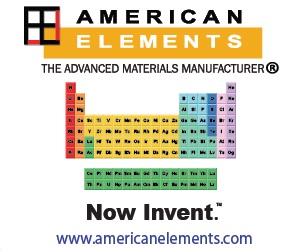
April 22 - 26, 2024
Seattle, Washington
May 7 - 9, 2024 (Virtual)
Symposium Supporters
2024 MRS Spring Meeting & Exhibit
EL06.03.09
High-Throughput Combinatorial Approach to The Synthesis of a Lead-Free Relaxor Ferroelectrics System
When and Where
Apr 23, 2024
5:00pm - 7:00pm
5:00pm - 7:00pm
Flex Hall C, Level 2, Summit
Presenter(s)
Co-Author(s)
Di Zhang1,Katherine Harmon2,Michael Zachman3,Ping Lu4,Doyun Kim5,Qing Tu5,Aiping Chen1
Los Alamos National Laboratory1,Argonne National Laboratory2,Oak Ridge National Laboratory3,Sandia National Laboratories4,Texas A&M University5
Abstract
Di Zhang1,Katherine Harmon2,Michael Zachman3,Ping Lu4,Doyun Kim5,Qing Tu5,Aiping Chen1
Los Alamos National Laboratory1,Argonne National Laboratory2,Oak Ridge National Laboratory3,Sandia National Laboratories4,Texas A&M University5
Developing novel lead-free nontoxic ferroelectric materials is crucial for the next-generation microelectronic technologies in regard to clean energy and environmental sustainability. However, materials discovery and properties optimization have usually been a frustratingly slow process due to the limited throughput in traditional synthesis methods. In this work, using a high-throughput combinatorial synthesis approach, we fabricated lead-free ferroelectric superlattices and solid solutions of (Ba0.7Ca0.3)TiO3 (BCT) and Ba(Zr0.2Ti0.8)O3 (BZT) phases with compositional gradients. The high-resolution X-ray diffraction and scanning transmission electron microscopy (STEM) revealed the good film quality and well-controlled compositional gradient throughout the samples. Ferroelectric and dielectric properties identified the “optimal property point” achieved at the morphotropic phase boundary (MPB) with the composition of BZT-52BCT. The displacement vector maps revealed the tunable ferroelectric domain sizes by varying the single layer thickness of the {BCT/BZT}n superlattices. This high-throughput synthesis approach can be applied to many other materials systems to expedite novel materials discovery and property investigations.Keywords
oxide | scanning transmission electron microscopy (STEM)
Symposium Organizers
Aiping Chen, Los Alamos National Laboratory
Woo Seok Choi, Sungkyunkwan University
Marta Gibert, Technische Universität Wien
Megan Holtz, Colorado School of Mines
Symposium Support
Silver
Korea Vacuum Tech, Ltd.
Bronze
Center for Integrated Nanotechnologies, Los Alamos National Laboratory
Radiant Technologies, Inc.
Korea Vacuum Tech, Ltd.
Bronze
Center for Integrated Nanotechnologies, Los Alamos National Laboratory
Radiant Technologies, Inc.
Session Chairs
Aiping Chen
Woo Seok Choi



















